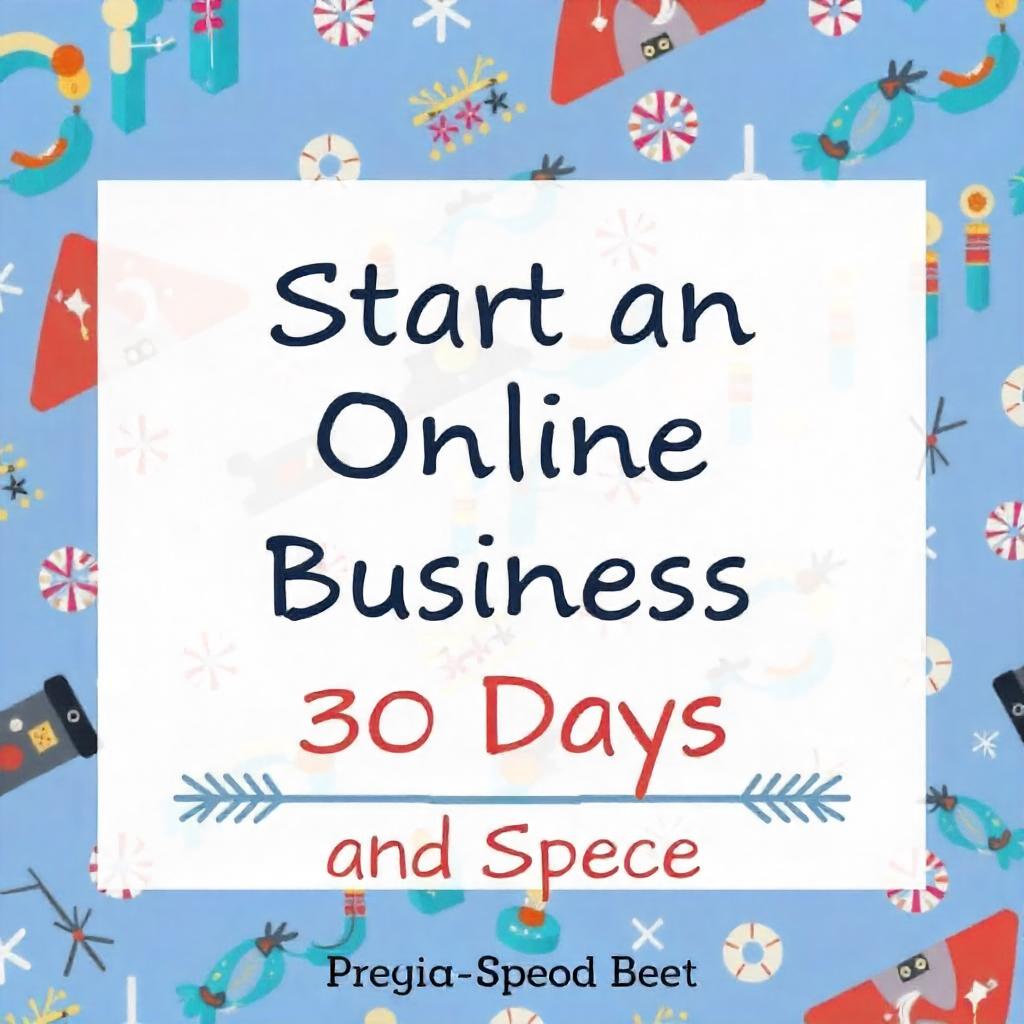Starting an online business may seem like a daunting task, but with the right plan and a focused approach, you can build a successful venture in just 30 days. Whether you’re looking to sell physical products, offer services, or create digital content, the steps outlined below will guide you through the essential tasks to launch your online business quickly and efficiently.
Day 1-3: Identify Your Niche and Business Idea
The first step in starting any business is identifying your niche. A niche refers to the specific market segment you’ll target with your products or services. Choosing the right niche is critical to the success of your business. Focus on areas where you have knowledge, passion, or experience, and ensure there is enough demand and market potential.
Ask yourself the following questions to help identify your niche:
-
What are you passionate about or skilled in?
-
What problems can you solve for your target audience?
-
Is there a demand for the products or services you want to offer?
Once you’ve chosen your niche, solidify your business idea. This is the foundation upon which your business will grow. Whether it’s an e-commerce store, digital service, or subscription-based business, make sure your idea meets the needs of your target market.

Day 4-7: Conduct Market Research
Once you’ve settled on your business idea, it’s time to research the market. Understanding your competition and target audience is crucial for positioning your business effectively. Here’s how you can conduct market research in the early stages:
-
Analyze Competitors: Identify competitors in your niche and study their offerings, marketing strategies, and customer feedback.
-
Know Your Audience: Research your target demographic. Understand their pain points, preferences, and buying behavior.
-
Assess Market Demand: Use tools like Google Trends, surveys, and forums to gauge the demand for your products or services.
The insights you gather from this research will help you refine your business idea and identify areas where you can differentiate yourself from competitors.
Day 8-10: Choose a Business Name and Legal Structure
Naming your business is an exciting step, but it requires careful thought. Choose a name that is memorable, easy to spell, and reflects your brand identity. Once you’ve selected a name, check if the domain is available for your website and ensure there are no trademarks or other businesses with the same name.
In terms of legal structure, most online businesses choose between sole proprietorship, LLC (Limited Liability Company), or corporation. For most new online entrepreneurs, an LLC offers a balance of liability protection and tax flexibility. Consult with a lawyer or accountant to ensure you’re selecting the right structure for your business.
Day 11-13: Register Your Domain and Set Up Your Website
Your website is the digital storefront of your business, so setting it up is essential. First, purchase a domain name that reflects your business and is easy to remember. Use domain registrars like GoDaddy, Namecheap, or Google Domains to secure your domain.
Next, choose a website builder that suits your business needs. Popular platforms for online businesses include:
-
Shopify for e-commerce stores
-
WordPress for blogs or content-driven sites
-
Wix or Squarespace for simple drag-and-drop websites
Set up your website with clear navigation, professional design, and easy-to-use functionality. Make sure it is mobile-friendly, as many customers shop on their phones.
Day 14-17: Create Your Products or Services
Now it’s time to create the products or services you’ll be offering. If you’re selling physical products, source your inventory or set up a dropshipping arrangement. If you’re offering digital products, like e-books or courses, focus on content creation and ensure the quality meets your audience’s expectations.
For service-based businesses, outline the services you will offer and determine how you will deliver them. Will it be through consultations, packages, or subscriptions? Be sure to price your offerings competitively based on market research.
Day 18-20: Set Up Payment Systems and Shipping
Once your products or services are ready, you’ll need to set up a payment system. For e-commerce businesses, platforms like Shopify or WooCommerce provide built-in payment gateways. Popular options for accepting payments include PayPal, Stripe, and credit card processing services.
If you’re selling physical products, set up your shipping options as well. Decide on your shipping strategy (e.g., free shipping, flat-rate shipping, international shipping), and research reliable couriers to fulfill your orders.
Day 21-23: Build Your Brand Identity
Creating a strong brand identity is crucial for standing out in a crowded market. Your brand identity includes elements like your logo, color palette, font style, and overall visual appearance. Consistency is key across all touchpoints, from your website to your social media accounts.
Tools like Canva or Adobe Spark can help you design professional-looking branding materials without hiring a designer. Additionally, create a compelling brand story that resonates with your target audience. Share why you started your business and the value you bring to customers.
Day 24-26: Implement a Marketing Strategy
Now that your website is set up and your brand is established, it’s time to develop a marketing strategy. You can start small with the following tactics:
-
Social Media: Choose a platform where your audience is most active (e.g., Instagram, Facebook, or LinkedIn) and begin posting engaging content. Include a mix of product promotions, helpful tips, behind-the-scenes content, and customer stories.
-
Email Marketing: Build an email list by offering something of value (e.g., a discount or free resource). Use platforms like Mailchimp or ConvertKit to set up automated email campaigns.
-
Search Engine Optimization (SEO): Optimize your website’s content to rank higher in search engines. Use keyword tools like Google Keyword Planner or Ubersuggest to find relevant keywords and incorporate them into your website copy.
These marketing strategies will help you start attracting your first customers.
Day 27-30: Launch Your Business and Monitor Progress
Once everything is set up, it’s time to launch your online business! Announce your launch on social media, send out an email to your list, and encourage your friends and family to spread the word. You can also run a special promotion or giveaway to entice early customers.
After launch, monitor the performance of your business by tracking metrics like website traffic, sales, and customer engagement. Use tools like Google Analytics and social media insights to evaluate your progress and adjust your marketing strategies accordingly.
Conclusion
Starting an online business in 30 days is an achievable goal with the right mindset and approach. By following these steps and staying focused, you can create a strong foundation for your business in a month. Remember, the first 30 days are just the beginning. Success will come with persistence, learning from your experiences, and continually improving your products and services.
